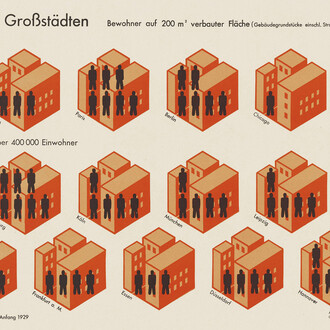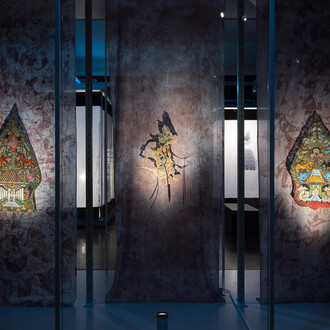Love Me, Love Me Not is an exhibition of contemporary art from Azerbaijan and its neighbours, featuring recent work by 16 artists from Azerbaijan, Iran, Russia, and Georgia. Produced and supported by Yarat, a not-for-profit contemporary art organisation based in Baku, and curated by Dina Nasser-Khadivi, the exhibition will be open to the public from 3 April until 25 May 2014 at the Heydar Aliyev Cultural Centre, Baku, Azerbaijan.
"Each piece in this exhibition has a role of giving the viewers at least one new perspective on the nations represented in this pavilion, with the mere intent to give a better understanding of the area that is being covered. Showcasing work by these artists in a single exhibition aims to, ultimately, question how we each perceive history and geography." explains curator Dina Nasser- Khadivi.
The exhibition offers a diverse range of media and subject matter, with video, installation and painting all on show. Pieces range from those steeped in historical reference, to those with more site-specific responses, through to those which are inspired by personal history.
Faig Ahmed takes the motifs found in Azerbaijani carpets as a starting point for his work, reinterpreting these to underline the rapid shift Azerbaijan is experiencing towards modernity. His thread installation Untitled (2012) deconstructs the notions of craft inherent to the traditional process of weaving, extending the usual two-dimensional plane of the finished carpet across a threedimensional space.
In his most ambitious project to date, Shoja Azari will show a specially commissioned film which recreates the Haft Paykar, the romantic epic of the 12th century, by Nizami of Ganja. Haft Paykar or Seven Beauties is an allegorical romance, which takes self-knowledge as the essential path to human enlightenment as its central theme.
Ali Banisadr will be producing his largest work to date for the exhibition, in the form of a triptych inspired by the pervasive symbolism of fire and light. These elements, prevalent in both Azerbaijan and Iran, relate to the origins of Zoroastrianism as well as the etymology of 'Azerbaijan', which derives from the Persian name for 'Guardians of Fire'. Through effective use of colour and painterly control, Banisadr translates the imagery of his childhood, his extensive understanding of art history, and his sharp observations of everyday life onto canvas, capturing insightful details of humanity with movement, energy, and abstraction. Banisadr's works are housed in public collections worldwide including the Metropolitan Museum of Art in New York, Museum of Contemporary Art in Los Angeles, the Saatchi Gallery and the British Museum in London.
Ali Hasanov, from Azerbaijan, uses a contemporary appropriation of everyday materials. His work Masters (2012) features hundreds of "veniki"(brooms made of bundled twig and common in post-Soviet countries) which are bound together to form a sculptural whole.
Taus Makhacheva will re-produce a film, recently shown at the Liverpool Biennale about an abandoned silk-road city Gamsutl (2012) through a young male protagonist who "dances" to enact the fragmented qualities of the city, now half forgotten.
Slavs & Tatars ' installation entitled Molla Nasreddin The Antimodernist (2011) is a life-size sculpture as a playground "ride" for adults and children alike and refers to the popular Sufi philosopher of the 13th century. By creating works that can be directly engaged with by the public, the collective addresses notions such as generosity and participation through the disarming use of humour. Molla Nasreddin also refers to the legendary Azerbaijani satirical periodical of the early 20th century, which not only contributed to a crucial understanding of national identity, but offered a momentous example of the powers of the press. In their installation Love Me, Love Me Not, the collective pluck the petals off the past to reveal an impossibly thorny stem: entire metropolises are caught like children in the spiteful back and forth of a custody battle, representing the evolution of the region over time - a theme which is at the core of this exhibition.
By bringing artists from Azerbaijan and its surrounding region together in one exhibition, Love Me, Love Me Not will create new perspectives on the contemporary art of Azerbaijan, as well as that of Iran, Russia and Georgia.
Artists featured: Faig Ahmed (Azerbaijan), Rashad Alakbarov (Azerbaijan), Afruz Amighi (Iran), Shoja Azari (Iran), Rashad Babayev (Azerbaijan), Mahmoud Bakhshi (Iran), Ali Banisadr (Iran), Ali Hasanov (Azerbaijan), Orkhan Huseynov (Azerbaijan), Sitara Ibrahimova (Azerbaijan), Aida Mahmudova (Azerbaijan), Taus Makhacheva (Russia), Farhad Moshiri (Iran), Farid Rasulov (Azerbaijan), Slavs and Tatars (Eurasia), Iliko Zautashvili (Georgia)
Heydar Aliyev Cultural Center
Heydar Aliyev Avenue, 1
Baku AZ 1033 Azerbaijan
info@heydaraliyevcenter.az
www.heydaraliyevcenter.az
Related images
- Taus Makhacheva (Russia, b. 1983), Gamsutl, 2012, colour video with sound 16.01 min, courtesy of the artist
- Aida Mahmudova (Azerbaijan, b. 1982), Recycled, 2012 - 2013, metal window grates, stainless steel, 310 x 270 each, 620 x 270 overall, courtesy of the artist and YAY Gallery, Baku, Azerbaijan
- Sitara Ibrahimova (Azerbaijan, b. 1984), The Edge, 2012, video and photography installation with sound, Part one: Agdam occupied territories of Azerbaijan / Lost in Karabakh, courtesy of the artist and YAY Gallery, Baku, Azerbaijan
- Afruz Amighi (Iranian, b. 1974), Untitled, 2013, woven polythelene, plexiglass base, metal chain, aluminium, dimensions variable, courtesy of the artist and Nicelle Beauchene Gallery, New York
- Slavs and Tatars (Eurasian Collaboration founded in 2006), Molla Nasreddin The Antimodernist, 2012, fiberglass, steel, rubber, paint
157 x 165 x 88 cm, courtesy of the artist and The Third Line Gallery, Dubai - Faig Ahmed (Azerbaijani, b. 1982), Untitled, 2012, thread installation, dimensions variable, courtesy of the artist and YAY Gallery, Baku, Azerbaijan














